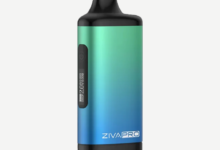
Metadata Management and Its Best Practice
Data volumes and categorization is growing, so it becomes essential to derive business value. Metadata management helps to propel data governance goals for high data quality, collaboration, and compliance across the company. Metadata management is an agreement defining, which information assets are valuable and how to convert data into a business asset.
What are Metadata and its significance?
Metadata means data description for some people but it is much more. With an increase in data complexity, metadata adopts new roles. For example, metadata can be about quarterly sales perception or may define a source-to-target mapping for your data warehouse. Everything boils down to the context like –
- Who
- What
- Where
- Why
- When
- How
Metadata is like an address written on an envelope, which does not convey what exactly is within the envelope but offers plenty of context like –
- Who will receive it?
- Where it came from?
- When was it posted?
- How thick it is?
- Which courier dropped it?
This data allows you to start detecting the content inside like what it means and how to use it. In the same way, digital metadata gives an idea of the IP address that can be matched with online activities. When you undertake metadata management Training at Data Management University, you will learn about technical and business metadata.
- In technical metadata, the information about data format and structure is provided including access permissions, data lineage, and data models.
- In business metadata daily business terms like business rules, data sharing policy, data quality instructions, and table & column are defined.
Metadata is classified according to the purpose it functions in a business environment. It helps to identify, classify, define, store, control, and manage the data.
Best practices for successful metadata management
Data governance and metadata management go hand in hand. It ensures access to data that is understood and used correctly. Self-service and automation work only when good quality data is accessible with shared knowledge about metadata. Best practices for metadata management adopted as early as possible is a great way to ensure success.
Determine a metadata strategy
The metadata strategy has to support the business vision and goals. It is the foundation to assess long-term value. A solid strategy includes –
- Alignment with business goals
- Detect high priority activities
- Evaluate implementation procedure
- Link to digital transformation like digitization, enterprise-resource -planning upgrading, or omnichannel enablement [these depend on data quality and availability]
Establish roles and responsibilities
Concentrate on the high-priority activities to drive metadata management efforts in an appropriate direction.
- Identify top use cases associated with metadata like data governance, risk & compliance, data analysis, data quality, and more.
- Capture practical metadata needs like digital identification, resource discovery, etc.
- Specify ways to use a proposed solution like publication, metadata capture & archive, integration, etc.
- Define the scope after considering the critical use cases and essential requirements.
Defining roles and responsibilities guarantees accountability for the metadata quality!
Adopt metadata standards
Metadata standards are evolving and differ in complexity and detailing levels. The ISO 15836 is a basic and commonly implemented metadata standard. E-GMS is a metadata standard for government information resources. The ISO 19115 is a metadata standard used to define physical or digital data with a spatial dimension. Evaluate the standard that aligns best with your communities and use case.
Make sure that everyone from top to bottom level personnel in the organization participates in the metadata management process for better success!








